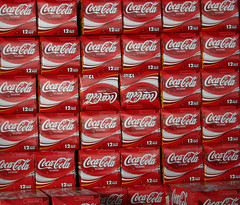With all the problems we have in the world, us advertising professionals patting ourselves on the back is a bit ridiculous. Countries are at war. People are starving. Rob Ford is wiping smoothie chunks from his International Clothiers blazer. Aren’t there more critical problems to solve and more important people to celebrate?
Of course there are. But that doesn’t mean we shouldn’t do support Cannes.
Acknowledged work from around the world gives us all something to shoot for during the other 51 weeks of the year. It inspires us. It drives us. It informs us. And it is the source of that nagging realization that what we’re working on isn’t quite good enough. Yet.
Here’s who I think should go home form Cannes with some hardware. Put them into whatever category you want. These are the ones that’ll continue to motivate me over the next 12 months (in order of importance)
Red Bull Stratos
Whenever you think you have a great idea, ask yourself, “Is it as good as orchestrating the first human to ever break the sound barrier without any form of engine power?”. Sure, this was a really cool brand-appropriate initiative. But more than that, it redefined the editorial / advertising relationship and proved that consumers will tune into great content, regardless of who pays the bill for its creation.
Oreo Daily Twist
“You can still dunk in the dark” was one of my favourite executions of the year but let’s not forget that its spike was set up by a year long volley from the Daily Twist. Oreo didn’t just sign up for creating compelling content, they committed to it in a fun and progressive and consistent way. It was always fresh. And we kept coming back for more. Isn’t that what it’s all about?
Philips Walita Fruit Mashup
Oh, you made a QR Code? Big deal. These people invented new fruit.
Coca-Cola Small World Machines: India and Pakistan
Getting people from two nations who always seem to be on the brink of war to virtually touch hands with one another was more than just a nice story. It was a hint of Coke’s global content plan and a reminder that brands can (and should) be good. More than that, what do you think is more important? Bringing peace (however long or short it was) to a dangerous zone or paying Beyonce a lot of money to dance with your product? One has a soul. The other has a star.
McDonald’s: Our Food. Your Questions.
Thanks to this campaign, there’s a new definition of creativity. It’s called honesty. In a surprising turn of events out there, clever has been trumped by genuine. Smoke and mirrors have been defeated by transparency. And McDonald’s has won over skeptics. Congrats Tribal DDB. You absolutely nailed it.
Ragu’s Long Day of Childhood.
Everything about this campaign feels old school. There’s the food porn, the bite and smile, the cheezy track and more. Who cares? It features a wonderful insight and hilarious scenarios that can keep going as long as we want them to. I haven’t seen a campaign with legs like this since “Real American Heroes / Real Men of Genius”. Keep ‘em coming.
Dove Real Beauty Sketches.
I know, I know. Some of you wise ones out there dissected this down to the molecular level to justify your Negative Nancy perspective. Well, that’s wrong. You’re over thinking it. How a woman thinks she looks is a symptom of a lack (or abundance) of self confidence. Beauty may not be important but the underlying self esteem that warps our perception of ourselves is. If we don’t think we’re beautiful, we probably don’t think we’re as smart or as funny as we are either. Great concept. Great execution.














